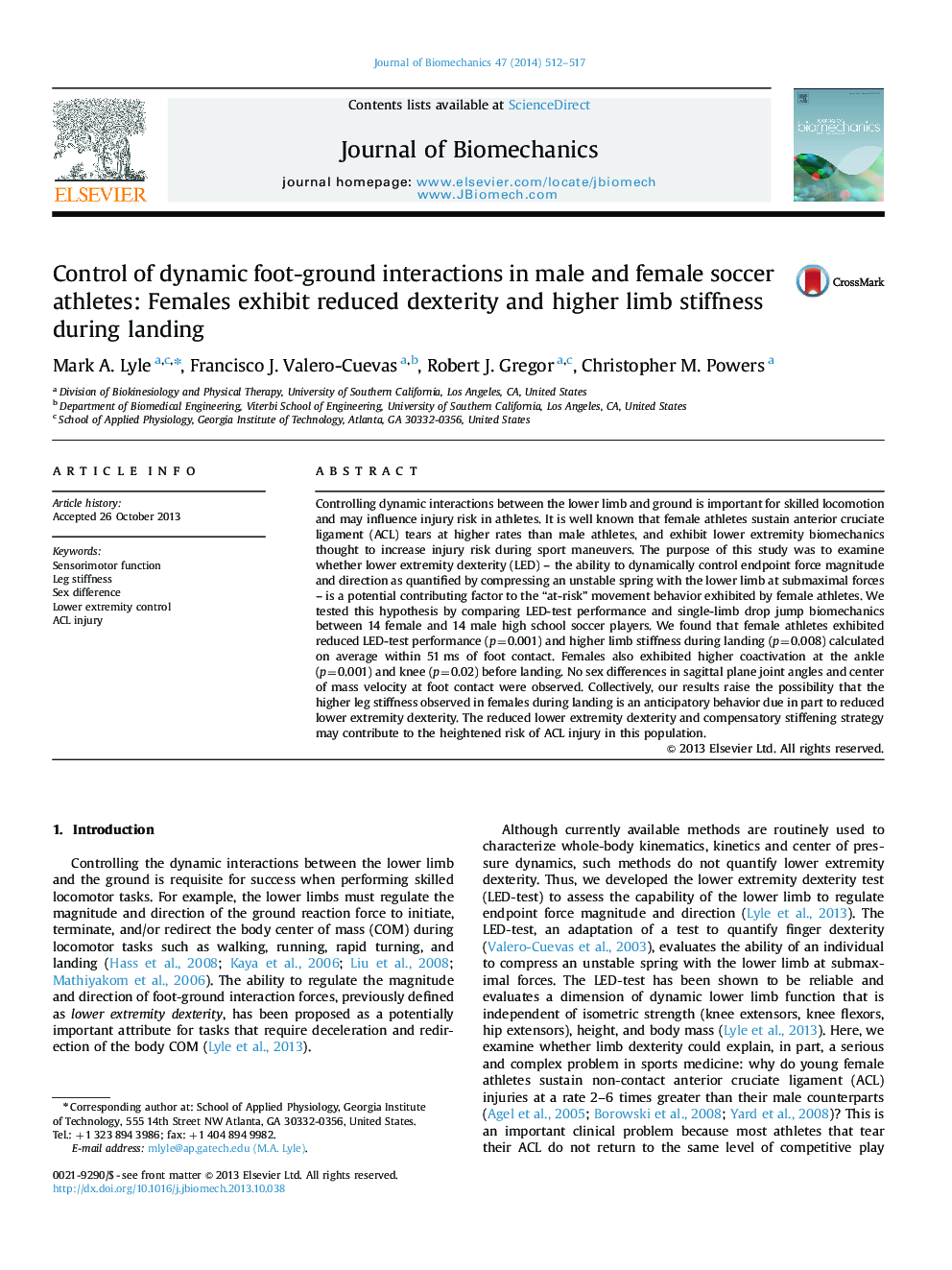| Article ID | Journal | Published Year | Pages | File Type |
|---|---|---|---|---|
| 10431564 | Journal of Biomechanics | 2014 | 6 Pages |
Abstract
Controlling dynamic interactions between the lower limb and ground is important for skilled locomotion and may influence injury risk in athletes. It is well known that female athletes sustain anterior cruciate ligament (ACL) tears at higher rates than male athletes, and exhibit lower extremity biomechanics thought to increase injury risk during sport maneuvers. The purpose of this study was to examine whether lower extremity dexterity (LED) - the ability to dynamically control endpoint force magnitude and direction as quantified by compressing an unstable spring with the lower limb at submaximal forces - is a potential contributing factor to the “at-risk” movement behavior exhibited by female athletes. We tested this hypothesis by comparing LED-test performance and single-limb drop jump biomechanics between 14 female and 14 male high school soccer players. We found that female athletes exhibited reduced LED-test performance (p=0.001) and higher limb stiffness during landing (p=0.008) calculated on average within 51Â ms of foot contact. Females also exhibited higher coactivation at the ankle (p=0.001) and knee (p=0.02) before landing. No sex differences in sagittal plane joint angles and center of mass velocity at foot contact were observed. Collectively, our results raise the possibility that the higher leg stiffness observed in females during landing is an anticipatory behavior due in part to reduced lower extremity dexterity. The reduced lower extremity dexterity and compensatory stiffening strategy may contribute to the heightened risk of ACL injury in this population.
Related Topics
Physical Sciences and Engineering
Engineering
Biomedical Engineering
Authors
Mark A. Lyle, Francisco J. Valero-Cuevas, Robert J. Gregor, Christopher M. Powers,
